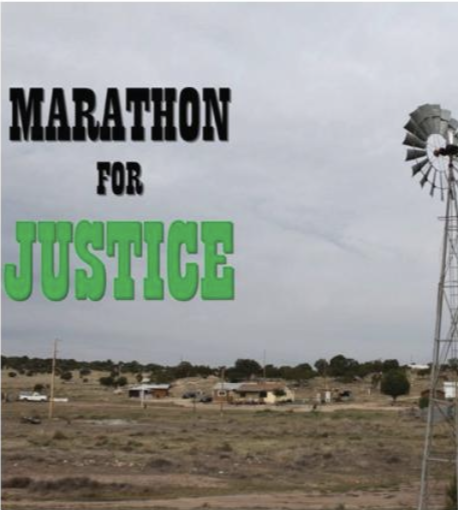By Emily Norman, Staff Writer
On the evening of Thursday April 19th, the film Marathon for Justice was screened in the lecture room of Bailey Hall on the USM Gorham campus as a part of this year’s convocation. The Convocation theme this year is Race and Participatory Democracy. The film, produced by Empathy Works, details the history of the United States and its environmental racism. This is a term first coined by Robert D. Bullard in the early 1980’s to describe how the government has a history of putting environmentally dangerous things – such as refineries, deposits of hazardous waste, etc. – in areas with high populations of people of color.

Not only has this problem affected African American communities, but it also has heavily affected populations of Latinos and Native Americans throughout the country. The film particularly highlights the environmental racism against African Americans and Native Americans, as it details largely African American-led environmental justice protests in Philadelphia, the protests at Standing Rock, and the struggles the Navajo people face in the southwest, where many of them live without running water and with very little access to clean water in general.
The idea of environmental justice which all of these people strive toward, was born in Warren County, N.C. . It was there that the government decided to dump harmfully contaminated soil, which rightfully enraged the citizens. Robert D. Bullard, one of the leaders of the actions against the dumping of the soil, created the term “environmental racism” at the time to describe what was happening as the government willfully chose to put dangerous materials into a largely African American community against the desires of those who lived there.
However, despite the many movements and protests that have happened since those in Warren County, not much has changed with environmental racism in the country. We see this in full effect in the African American neighborhoods in Philadelphia with rapidly increasing rates of asthma and lung problems, at Standing Rock, at the homes of the Navajo still affected by uranium poisoning and without regular access to safe drinking water and in South Dakota where the Lakota still fight for their rights to the Black Hills.
The fight against environmental racism only appears to be becoming harder with recent actions by our current administration against environmental protection laws and regulations. This only enables more companies and factions of the government to continue environmental racism rather than enacting change to help those who need access to things that should be basic human rights, such as regular access to clean air and water.
One of the scariest facts presented by the film was that only three states – Massachusetts, Pennsylvania and California – have laws that guarantee their citizens a right to clean water. This seems completely outlandish and pretty terrifying, especially coming from Maine, a state where, as one of the panelists and professors here at USM, Dr. Sandy Wachholz, reminded us has some of the best, cleanest public drinking water in the country. Another interesting point made by Wachholz was that in her research, she found that the USM students she spoke to gave the school an F when it came to environmental awareness and education. She also mentioned that Portland has levels of lead in its soil that is 400 percent higher than where it should be. This leads to many health issues for those in the city as they come into contact with the lead, most often through the air.
But these problems did not come without methods of actions against them. Wachholz spoke about gardening and planting flowers like sunflowers to help absorb the lead in the soil, as well as working to better winterize our homes to save energy as well as money.
Another interesting issue raised by another member of the panel, Dr. Julien Murphy, was the rise of domestic violence against women in communities affected by such environmental racism. Her work in women’s studies and philosophy has lead her to conclude this, as she saw that more women in affected communities were victims of violence from their partners or other men in their lives. She also compared the way in which western society has traditionally used and abused the environment to the way it subjugated women.
Overall, this event provided a significant understanding of the country’s history of environmental racism. Seeing the people themselves who are so greatly affected by air and water pollution really hits home, as faces and stories are put to the issues we often hear about and often have become calloused to. Anyone concerned with social justice issues, women’s issues, combating racism, or protecting the environment, should do some research or view Marathon for Justice.

